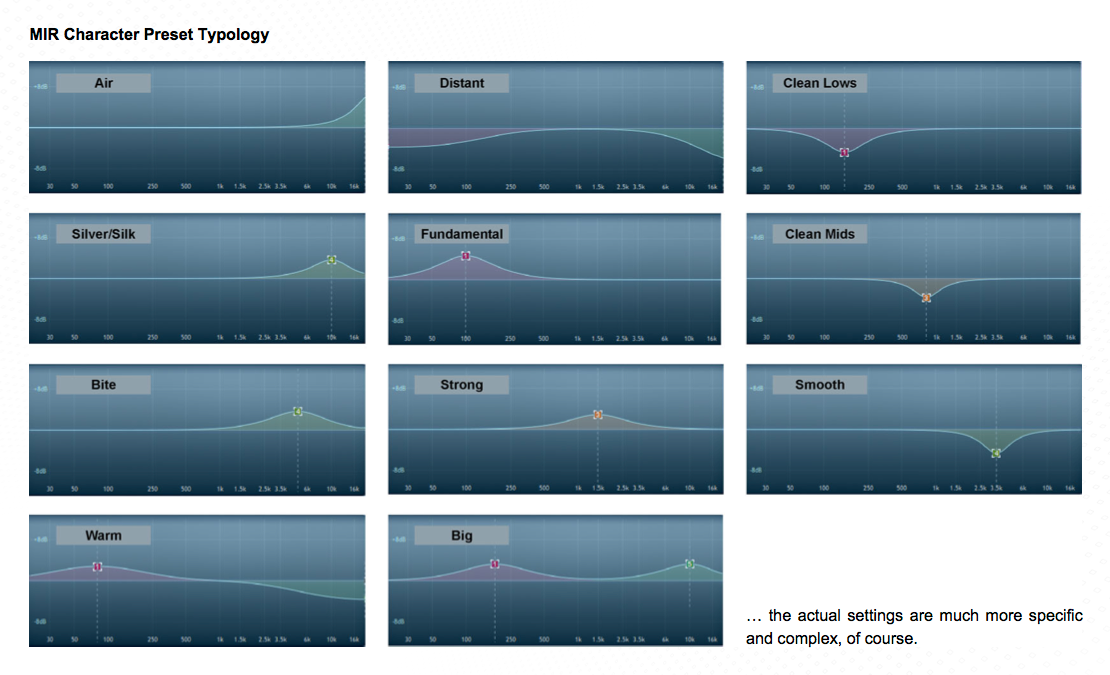This software is nothing short of incredible. After digging into it, I can safely say that I am beyond impressed and will be purchasing in the near future. What I'm most impressed by is how it behaves in a hybrid reverb set-up. I've never been a fan of convolution reverb in its most static form (i.e. Altiverb), but the phenomenal and time-saving spatialization capabilities of MIR combined with the seemingly endless flexibility in how it can blend with a more "spaceless" reverb make this such a joy to work with. Topping off various room ERs with Seventh Heaven was like taking a trip through soundtrack city.
That said, I have some questions for both the developers and experienced users:
1) For the creation of soundtrack type music (films, video games, etc.), it would seem that the Teldex pack and the Synchron Stage are the most useful roompacks to me. If I intend to use MiR primarily as a hybrid reverb set up (utilizing the early .3-.5s of MIR's IRs for spatialization info) to facilitate the creation of this style of music, is there any consideration I should give to the other roompacks? On one hand, it seems to me that feeding the early part of the Grossersaal's IR into a Hall reverb would generate a much more congruent spatial impression than a mis-matched venue and tail. On the other hand, the IR is shortened so much that perhaps it won't even make an audible difference. Or is there more ambisonic stuff at play here? Of course, I'll play around with it and test with my ears, but I was curious if anyone had any advice on this matter?
2) MiR encourages me to think more like a recording engineer and conductor than an electronic musician, which is great. However, I don't know a lot about the process of recording an orchestra or other musical ensemble in a scoring stage and all that goes into it. Similar to the academy on this website, is there a resource of some kind where I can learn more about how this process works? I'm particularly interested in learning about the input mics, how they work in real life, and how that translates to MiR's simulation of the microphones. That way I feel I can make more informed decisions with the software rather than blindly testing things until it "sounds gud".
That's all I can think of for now. Such an exciting tool! Thanks to all the developers who sacrificed sleep to make it possible for people like me to even conceive of making music like this.
- Sam
